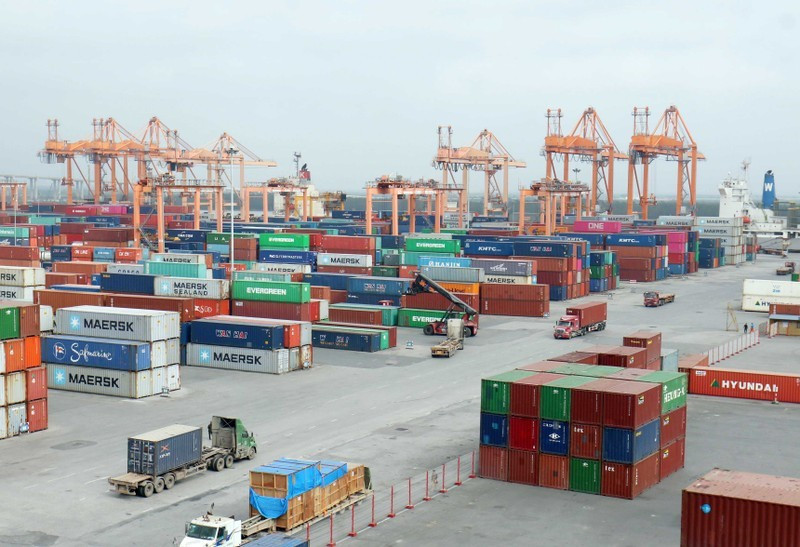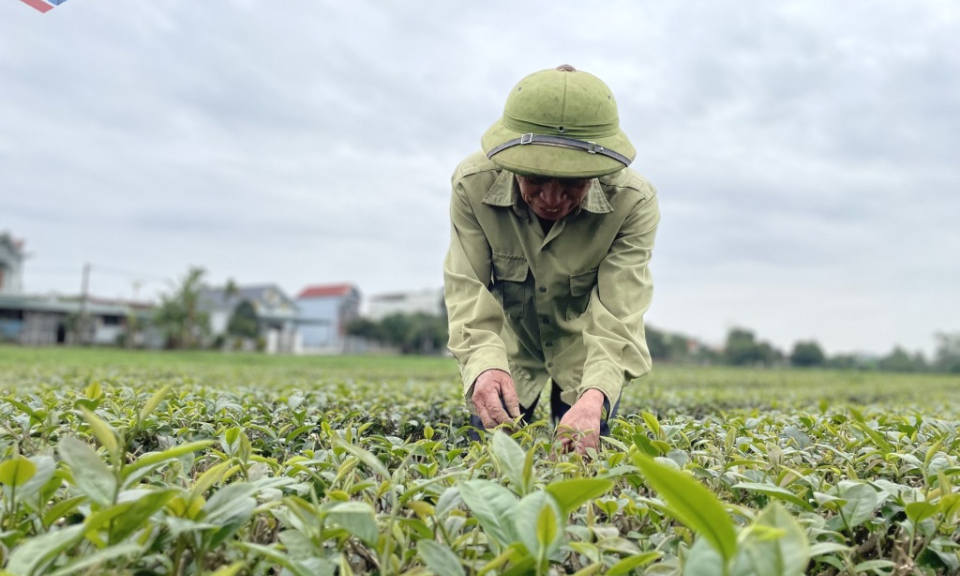Vietnamese economy resilient against challenges
With an impressive growth rate of 8.02% in the first year of implementing the socio-economic recovery and development programme, the Vietnamese economy reached 9.51 quadrillion VND (over 400 billion USD) in 2022.
Bucking the global trend, the Vietnamese economy had a year of strong recovery, exceeding expectations and achieving important results in almost all fields. The 8.02% growth rate was the highest since 2011, while inflation was kept at 3.15%, lower than the set target.
Growth highlights
The rebound of the Vietnamese economy was clearly seen in six growth highlights as announced by the General Statistics Office (GSO). Production and business activities recovered in all three economic sectors, with agriculture growing by 3.36%, industry and construction by 7.78% and services by 9.99%. Agriculture not only ensured supply for domestic demand but also provided an export boost as the global economy was at risk of a food crisis.
Industry continued to recover, with the index of industrial production in 2022 estimated to have risen 7.8% over the previous year, while many key industries posted strong growth.
Commerce and services achieved spectacular growth with the total value of retail sales and consumer services up nearly 20% against the previous year, placing it among the highest rates in recent years. Vietnam also reported a trade surplus of 11.2 billion USD in 2022.
Amid market and financial difficulties, the business community still striving to seek investment opportunities, as reflected in the record growth in the number of newly established enterprises and those resuming operations.
Despite difficulties continuing to affect business and investment activities, 2022 also witnessed high growth in total implemented social capital as well as the number of people with jobs and salary growth.
The bright colours of the 2022 socio-economic picture are also attributed to the success in keeping inflation at 3.15%, thanks to an abundant domestic food supply and flexible price regulations.
In addition to impressive economic growth, the size of the Vietnamese economy has also exceeded 400 billion USD, demonstrating Vietnam’s new stature on the international stage, said GSO Director Nguyen Thi Huong.
In the final month of 2022, international research organisations and financial institutions also upgraded their economic growth forecasts for Vietnam to 8.1-8.2%, with comments that Vietnam will lead economic growth in the Asia-Pacific.
Overcoming difficulties
Nevertheless, the growth momentum in 2023 is expected to be affected by headwinds from uncertainties in the global economy and unresolved domestic issues.
The first of which is the reduction in exports as Vietnam’s major trading partners are cutting their spending in a period of economic downturn and inflation.
In a recent report, HSBC stated that in November 2022, Vietnam’s exports fell for the first time in two years due to weak global demand. The fact that foreign enterprises continue to invest in Vietnam reflects the country’s long-term appeal, but Vietnam also needs to prepare for a “hibernation” in export activities.
According to Andrew Jeffries, the ADB Country Director for Vietnam, the Vietnamese dong’s 9% appreciation against the US dollar will increase inflation and the risks for some Vietnamese exports as the country has to import many materials and fuels for the manufacture of goods for export.
In such a context, Vietnam’s policy response should aim for a balance between curbing inflation and promoting growth as well as the stable operation of the financial system.
According to the IMF chief in Vietnam and Laos Francois Painchaud, the headwinds facing Vietnam include tightening global financial conditions, the Russia-Ukraine conflict and Chinese economic slowdown. At the same time, Vietnam is also facing domestic risks from the possibility of monetary tightening to prevent inflation and the liquidity of banks.
With these difficulties, the Vietnamese economy is forecast to grow by 5.8% in 2023, which is still high compared to many other countries. Experts said the difficulties and challenges from internal problems of the Vietnamese economy will continue in 2023, including instability in the financial and property markets, and difficultly for enterprises in accessing capital.
Furthermore, there are new requirements on building an independent and self-reliant economy, enhancing the resilience of the economy against external shocks. Correctly assessing the state of the economy, identifying challenges, and building appropriate socio-economic management scenarios are proactive ways to overcome the headwinds.
To successfully realise the socio-economic targets for 2023, including GDP growth at 6.5% and inflation at 4.5%, Minister of Planning and Investment Nguyen Chi Dung said economic management will focus on eight major groups of solutions, including completing the strategic infrastructure system, especially transport infrastructure; promoting the human factor; and rapid and sustainable development based primarily on science and technology, innovation and digital transformation.
Commenting on the group of measures on enhancing the quality of the socialist-oriented market institutions, Minister Dung stated that the legal framework must be able to adequately address the bottlenecks in resource mobilisation, the participation of economic sectors and public investment disbursement. At the same time, it is necessary to boost the confidence, morale and inspiration to do business as well as the protection of properties of enterprises and people.
2023 is the key year of the 2021-2025 socio-economic development plan with challenges projected to be greater than advantages. On the foundation of macroeconomic stability and outstanding growth results in 2022 as well as the joint efforts of the entire political system, the Vietnamese economy will have the momentum for continued rapid and sustainable growth, helping to successfully realise the national development objectives.






